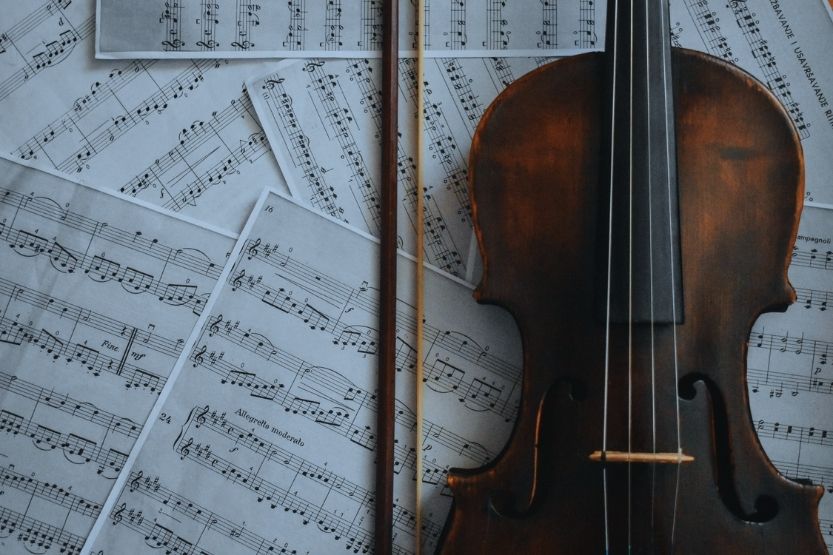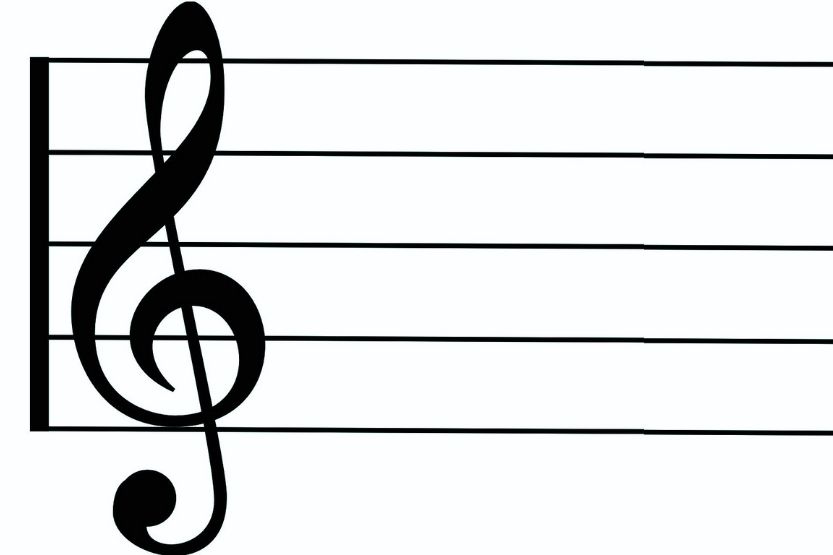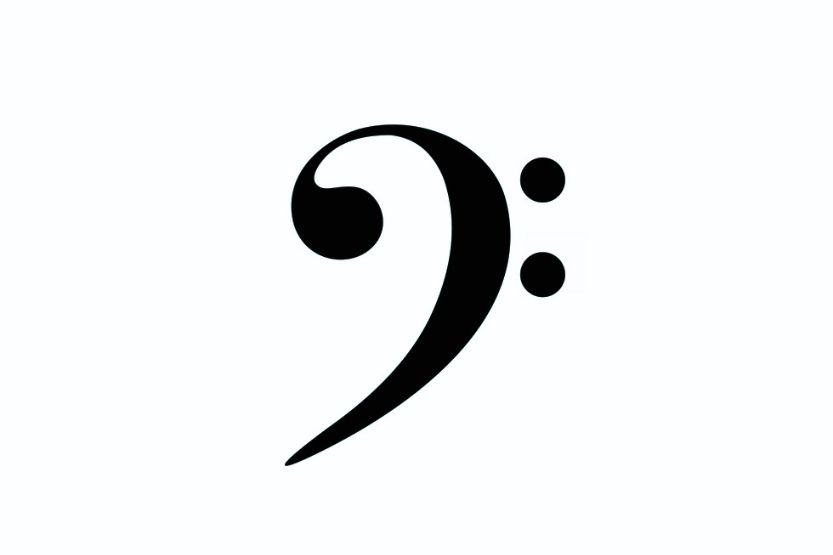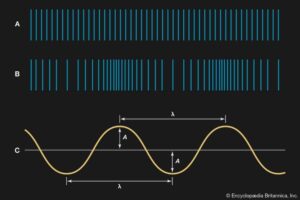If you understand the little things that make a song or a piece of music beautiful and inspiring, you will appreciate it more. Two musical ingredients define songs and music pieces. This article will discuss bass and treble – the difference between treble and bass – so you will know how they affect how you listen to music.
When it comes to music or sound, the bass is the lowest range of frequency or the lower notes, while treble is the highest range of frequency or the higher notes. Due to its lower frequency, the bass line is placed lower than the treble line, while the treble line is located above the bass line due to its higher frequencies.
Bass refers to pitches or tones that have lower frequencies or vibrations. In music sheets, the bass clef represents these notes. Treble refers to tones or pitches with frequencies or vibrations at the higher end that humans can hear. They are the higher notes with a treble clef symbol.
Read on to learn more about bass and treble, what they are, and their differences.
Bass and Treble

Lowest Frequency or Note in Music
Bass is the lowest frequency or note in music or sound, while treble is its counterpart. Due to its lower frequencies, the bass notes are consistently below the treble notes in music sheets.
Treble Is the Counterpart of Bass
You can say that the treble is the counterpart of the bass since the bass represents the lower notes that humans can hear, while the treble represents the highest notes that we humans can hear. In this aspect, treble and bass is not the same thing.
Balance in Frequencies
When you are dealing with two different frequency ranges, you inevitably run into certain balancing problems. If there is no balance, one frequency range will dominate the other. So in bass vs treble frequencies, you need to always strive for balance.
Treble Is Always Higher Than the Bass in Tracks
In this regard, the usual practice is to have the treble consistently higher than the bass in audio tracks. By doing this, there will always be balance in the audio tracks. It will also eliminate issues like vocal projection, mid-frequency muddiness, and low-end rumble.
Audio Spectrum
We humans can only hear within a certain range of frequencies or audio spectrum, specifically between 20 Hz and 20 kHz. This spectrum has three categories. From the lowest to the highest, they are:
- Bass: Ranges between 20 Hz and 400 Hz; Instruments that produce sound on this frequency range are kick drum, bass guitar, and the base human voice.
- Mid: Ranges between 400 Hz and 5.2 kHz; Most of us humans have singing voices that coast along with this range.
- High (Treble): Ranges above 5.2 kHz; Sounds of the crickets you hear at night are within this range. Sopranos and tenors produce vocal sounds along with this range as well. We are not able to hear higher frequency notes above 20 kHz.
So, when it comes to the laymen’s definition of treble vs bass, the bass is the heavier and boomy section of the band, while the treble is its sharp and squeaky high-end section. They are not the same, and their primary difference is quite apparent.
What Is an Appoggiatura in Music?
More on Bass
Opposite of Treble
The bass is the opposite of treble in its simplest term because it refers to the low pitch and frequency range. Bass notes are the lowest part of harmony in any musical composition. The frequency range of bass is between 16 Hz to 256 Hz. So, when you write it, you should place it in a lower line than the treble clef.
Musical Instruments That Produce Bass Pitches or Notes
Musical instruments that produce bass pitches or notes include:
- Tuba,
- Bassoon,
- Trombone,
- Double bass,
- Cellos, and
- Timpani.
The lower frequency range of the human voice is also called bass. Male adult singers are said to have bass voices.
Bridge the Gap Between the Treble and Percussions
The bass notes are important in musical compositions because they bridge the gap between the treble and the percussions. In a band, the guitars represent the treble sounds while the drums represent the percussion.
Influences the Rhythm
The bass notes also influence the rhythm of the music musicians play. This is why the bass line is important in the creation of music. The bass clef or the F clef is used to notate the bass notes in a music sheet. Bass is a term that was taken from ‘baers,’ an Old English word.
More on Treble

Highest Frequency That Humans Can Hear
In its simplest term, treble is the highest frequencies or note that we humans can hear. The notes or pitches that you can hear within this frequency range are called high notes. These pitches or notes are within frequencies that range from 2.048 kHz to 16.384 kHz.
Musical Instruments That Produce Treble Notes
You can hear treble notes in musical instruments, including:
- Violin,
- Piccolo,
- Flute, and
- Guitar.
In many older versions of amplifiers, you will see different knobs that control the sound quality being reproduced. One of these knobs is usually designated as Treble.
Tonal Range and Quality of Human Voice
Treble could also describe the tonal range and quality of the human voice. Examples of treble voices are the ones being produced by the Vienna Boys’ Choir. Such choirs are composed of little boys whose vocal frequency ranges have not yet been affected by adolescence. Their vocal ranges are still on the higher end of the vocal spectrum.
Treble Frequencies Have Different Versions
There are different versions or types of treble frequencies in a particular piece of music. The sound quality of a treble note or pitch depends on the instrument and type of music a musician plays.
Origin of the Word ‘Treble’
Lastly, the word ‘treble’ is from ‘triplus,’ a Latin word. It refers to the highest parts or notes of a certain musical composition. In sound recording, it is the highest note or pitch. Musicians also refer to treble as the G clef in music.
Again, bass vs treble – what’s the difference? The difference between the bass and treble is that the latter refers to the highest range of frequency or notes. So, the treble line is above the bass line for this reason.
Key Differences of Bass and Treble

Two of the most common terms in music that define the frequency range of certain pitches and notes are bass and treble. While they both designate pitches and notes, they are very different from each other. Here are the bass vs treble differences:
1. Different Frequencies
The key difference between bass and treble is that they refer to different frequencies or pitches. Bass refers to the lower frequencies, while treble refers to the higher frequencies. Humans are incapable of hearing beyond 20kHz that’s why there’s a limit to the bass and treble frequencies.
For bass frequencies, our human ears can only hear as low as 20 Hz. And for treble frequencies, we are only able to listen to no higher than 2 kHz. But that does not mean that there are no lower or higher frequencies than the ones we can hear.
2. Different Clefs
In the music composition, bass and treble have different clefs. Bass, also F clef in music, indicates the pitches below the middle C. Meanwhile, musicians usually put a note on the fourth line of the music bar or measure to indicate treble or G clef.
The treble clef indicates the notes above middle C. Musicians represent this using an ornamental letter G, where its inner curve is around the note G4. This is also the reason why they call it G clef.
3. Treble Is Placed Higher Than the Bass
The nature of the sound frequencies that they represent influence their placement in the music sheet. Since treble represents higher notes, musicians put it above the bass in any music sheet of any musical composition.
4. Treble and Bass Instruments Are Different
Again, because of their higher frequencies, you can only play treble notes or pitches using musical instruments to produce higher pitched notes and sounds.
It will be tough for a soprano to sing the bass part of a choral piece for the human voice. The sound the soprano will produce would be strange if she even could sing the bass part.
In the same vein, you can’t produce the highest note that an electric guitar can produce if you are using a bass guitar.
5. Bass Balances the Sound Quality
It will be tiring to listen if you only hear treble notes and sounds in a musical composition. So, a balanced music piece is a must. It should have the higher frequencies balanced perfectly by the lower frequencies. That’s where bass frequencies come in.
6. Treble Commonly Carries the Melody
In most musical compositions, the treble frequencies are used to carry the melodies. The bass frequencies most often contribute to the harmony of the piece of music. There are times that bass notes carry the melody, but this is very seldom done.
7. Bass Influences the Rhythm
While bass frequencies do not carry the melody, it almost always dominates the rhythm of the music. You will notice this if you are listening to a recording of a rock band from afar. What you will mostly hear is the bass runs and not the melody runs. You will hear the constant boom, boom, boom of the song and most likely nothing else.
The bass notes are important in musical compositions because they bridge the gap between the treble and the percussions. In a band, the guitars represent the treble sounds while the drums represent the percussion.
8. Bass Fills the Gap
In any kind of music, there is a gap created between the treble and the percussion. One crucial role of the bass frequencies is to bridge that gap and make the music smoother, more harmonized, or homogenous. Because of its high frequencies, treble tends to stand out from among the many sounds you hear.
Conclusion: Bass and Treble – Difference Between Treble Vs Bass
In music, the bass has the lowest frequency range and lower notes. Treble, on the other hand, has the highest frequency range and higher notes. Due to its lower frequencies, the bass line is placed below the treble line in written music sheets.
Because of its higher frequency range, the treble line is always placed above the bass line simply because its frequencies are always higher than the bass.
In music sheets, the bass notes are notated with the bass clef, while the treble notes are notated with the treble clef. To follow the natural flow of things, always write the treble clef above the bass clef.
Related reading:
Chaconne Vs Passacaglia – What Is the Difference Between Them?
Euphonium Vs Baritone – What Are the Differences?






![Rap Songs with Good Bass [Best 15 Songs] rap songs with good bass](https://musicalinstrumentpro.com/wp-content/uploads/2021/10/rap-songs-with-good-bass-150x150.jpg)


